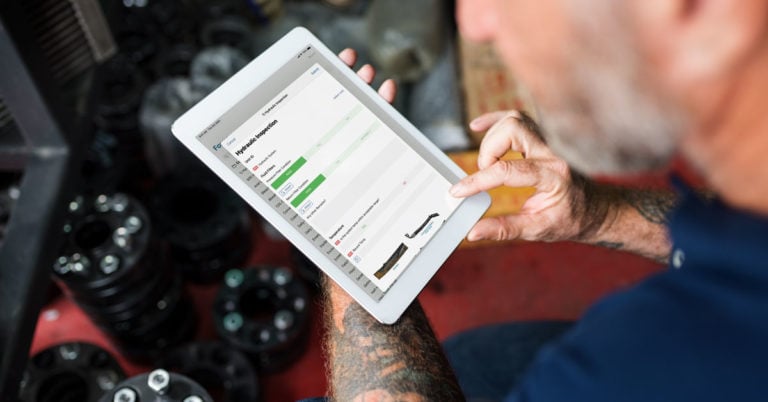CMMS, or a Computerized Maintenance Management System, is one of the most valuable technological tools in today’s modern industries. However, ensuring widespread and effective CMMS adoption can be difficult and is often met with several challenges. To overcome these challenges, companies can leverage the power of mobile technology. Integrating CMMS with mobile features provides convenience, real-time data access, and streamlined communication. In this post, we discuss the common challenges to CMMS adoption and outline key strategies for leveraging mobile technology to overcome them.
CMMS Adoption Challenges
CMMS provides essential benefits that ultimately lead to maintenance efficiency and equipment reliability. But the road to CMMS adoption has its fair share of roadblocks and barriers, including:
1. Resistance to Change
This is the most common challenge to CMMS adoption. Employees and other users who are used to traditional and manual processes can resist CMMS use and slow down system adoption.
2. Lack of Training and Support
CMMS adoption requires adequate training and support, both initial and ongoing. Without these, users will struggle to understand the proper use of the system, leading to frustration and underutilization.
3. Complexity of the System
An overly complex CMMS or one that is not tailored to the needs of an organization can also contribute to slow and ineffective adoption. A complex CMMS can have too many features that clutter the interface or have poorly configured functions with multiple steps that confuse the system users.
4. Limited Data Access
CMMS users require a desktop or local network connection to access data. This can limit the ability of users in remote or field locations to update information and submit critical data.
5. Communication Issues
With limited data access for on-site and field users, there will be delays in communication. These delays can cause bottlenecks in task assignments, approval processes, and feedback loops.
6. Inconsistent Usage
This is a common problem that occurs after the initial training and implementation of CMMS. Some users may fail to use CMMS consistently, leading to incomplete records and missed maintenance tasks.
7. Budget Constraints
CMMS solutions can be expensive, posing a challenge for small organizations or those with limited budgets. The cost of CMMS adoption includes software licensing, hardware purchases and setup, user training, and system maintenance.
8. Poor Integration
A CMMS that does not integrate well with the existing systems and processes currently in place in an organization will have limited effectiveness and value. Poor integration can lead to duplicate data entry, errors, and inefficiencies.
9. Lack of Leadership Buy-in
When the leaders of an organization fail to support CMMS integration, CMMS adoption is not likely to succeed. Teams need top-level encouragement to see the value in dedicating time and effort to learning and using the system.
Leveraging Mobile Technology for CMMS Adoption
Integrating mobile technology into CMMS can transform how the system is used and drive better results. Here are the ways CMMS mobile features can boost CMMS adoption:
User-Friendly Mobile Interface
CMMS adoption success depends on how easy it is to use the system. Mobile interfaces are more user-friendly than desktop ones. Thus, with a mobile CMMS feature, you encourage your technicians and other users to interact with the system more effectively and more often.
With a clean and easy-to-navigate mobile app, users can easily click or swipe to log work orders, scan assets, or input data immediately while in the field. Furthermore, a well-designed mobile interface can reduce the learning curve of its users and minimize resistance from employees and other users.
Real-Time Updates and Notifications
With instant CMMS access through mobile devices, communication delays can be significantly reduced. System users can create real-time updates and notifications that facilitate maintenance processes and empower critical decisions.
Mobile features also let users send and receive instant alerts for new tasks, preventive maintenance schedules, and critical equipment failures. Thus, the team stays well-informed and responsive, promoting the consistent and effective use of CMMS.
Offline Access and Automatic Syncing
When leveraging mobile technology for CMMS adoption, you must take into account that there are maintenance areas or locations that have limited or zero internet access. The mobile features of your CMMS must have offline functionality that allows its users to complete tasks, log work orders, and update records offline.
The offline data can then be automatically synced into the database once a connection is available. Thus, the workflow remains uninterrupted, and productivity is unaffected, ultimately encouraging consistent system usage.
Simplified Data Entry
Mobile CMMS technology makes data entry easier and faster, minimizing errors and promoting consistent use. Mobile features such as voice-to-text input, drop-down menus, and pre-populated fields help users log information quickly, even while in the field. Thus, you reduce the complexity of the system, minimize the learning time, and promote consistent usage.
Mobile Training and Support
To further improve CMMS adoption, mobile technology can also be used to offer in-app training modules and other resources to support effective CMMS usage. Using their mobile devices, users can access interactive tutorials, how-to videos, and help desk support on demand.
Having these resources available whenever needed means that users can access critical information and successfully resolve issues quickly. Also, accessible training and support ensure continuous training and, thus, effective CMMS adoption.
Mobile Analytics
A CMMS with robust analytical features is great, but it is better if you can access these features on mobile. With mobile analytics, remotely located or on-the-go managers can track performance metrics, work order completion rates, equipment downtime, technician productivity, etc., to empower their decisions. This not only promotes the consistent usage of CMMS but also makes it indispensable in making effective data-driven maintenance decisions, thus boosting CMMS adoption.
Cost-Effective Solutions
Mobile technology can offer cost-effective alternatives to an expensive full-scale CMMS that requires the purchase of computers, servers, and other hardware for on-site use. Mobile CMMS can reduce the upfront costs of computers, servers, and infrastructure. In addition, mobile training capabilities and a user-friendly interface also mean lower training costs.
Mobile software licensing fees and the cost to maintain and update the app are also lower. Thus, with mobile technology, companies can ensure faster CMMS adoption and enjoy its benefits without exceeding budget limits.
Cloud-Based Integration
Conventional CMMS solutions are designed with desktop computers in mind, making integration more complex. Mobile-enabled CMMS leverages several technologies to ensure that it seamlessly communicates with systems such as enterprise resource planning (ERP), inventory management, or financial systems.
Mobile CMMS makes use of cloud-based platforms to store, organize, and share data across different systems. Mobile CMMS platforms also come with pre-built APIs (Application Programming Interfaces) and similar technologies that promote a smoother and more reliable integration process.
In other words, mobile CMMS platforms are built with flexibility, scalability, and integration in mind. This allows them to connect more easily with other systems, ensuring effective CMMS adoption.
Quick and Tangible Results
Mobile-enabled CMMS are typically easier and faster to deploy compared to traditional desktop-based systems. Thus, teams can start using the system almost immediately, allowing leadership to see tangible results sooner. This helps overcome the lack of leadership buy-in that can slow down CMMS adoption. Mobile CMMS also provides leaders with data-based results, further convincing them of the benefits of the system and garnering their support.
Improve CMMS Adoption with Redlist’s Mobile App
Leveraging mobile technology is a powerful way to drive CMMS adoption. Mobile apps offer ease of use, real-time functions, cost-effective benefits, immediate results, and continuous learning. With mobile-enabled CMMS like Redlist, you can easily adopt CMMS fully and effectively into your maintenance workflows.Redlist is a cloud-based CMMS platform with mobile capabilities that can significantly streamline the maintenance process and drive successful CMMS adoption. With features such as real-time data access, offline functionality, and an intuitive user interface, Redlist can help you adopt a CMMS and see immediate benefits in productivity, uptime, and cost savings. You can now experience the seamless adoption of Redlist CMMS into your maintenance strategy. Schedule a free demo with our mobile software experts today!


